Abstract
Immune resistance experiments were carried out in guinea-pigs employing two tick species that as adults are ectoparasites of cattle (Ixodes holocyclus and Rhipicephalus appendiculatus). These studies showed that susceptibility of non-immune guinea-pigs to infestation with tick larvae varies according to the species of tick and the strain of guinea-pig. With both tick species, greater than 90% acquired resistance was achieved in several guinea-pig strains. Immune resistance was evident within a week following primary infestation and lasted up to 9 months following a single sensitizing exposure to tick feeding. The strength and duration of resistance was influenced strongly by the size of the initial sensitizing dose. Immune resistance was readily transferred to naive recipients by intravenous administration of either peritoneal exudate cells or immune serum from donors sensitized by a single prior infestation with ticks. Doses of serum as small as 0.5 ml transferred resistance. These studies demonstrate that both sensitized cells and immune serum factors contribute significantly to acquired host resistance to ticks that as adults are ectoparasites of cattle.
Full text
PDF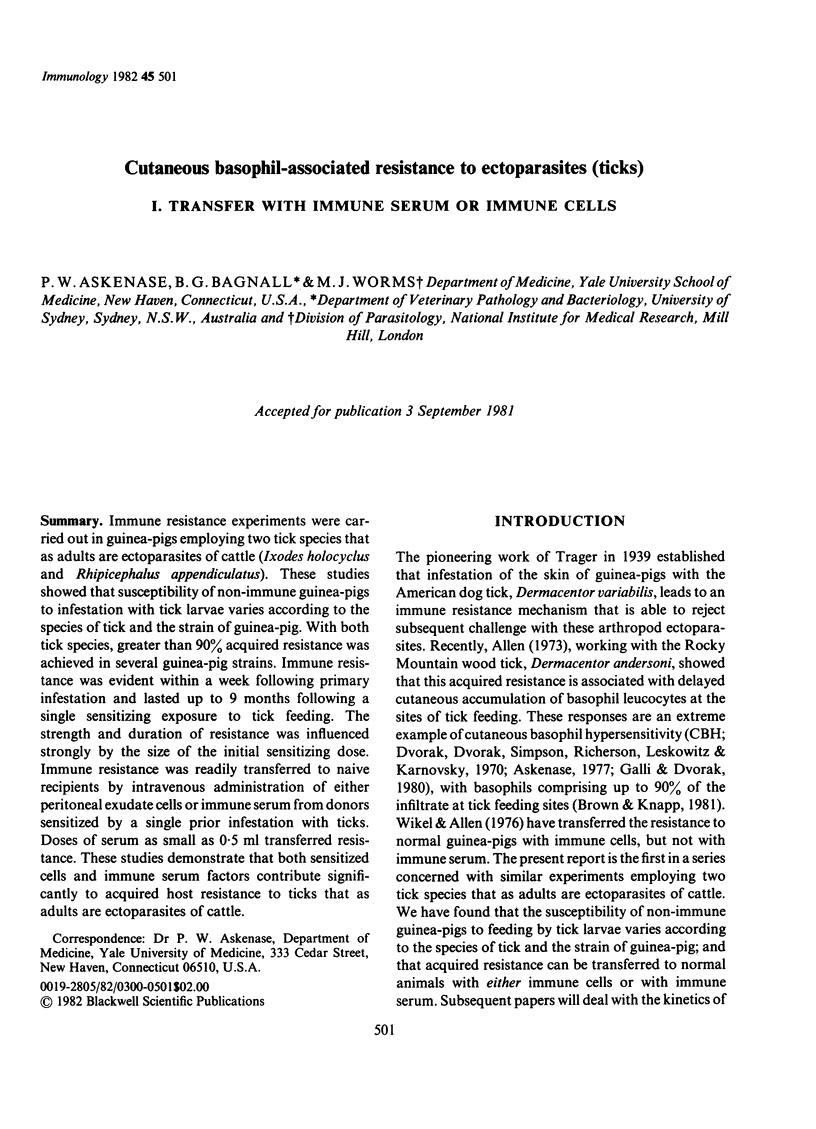
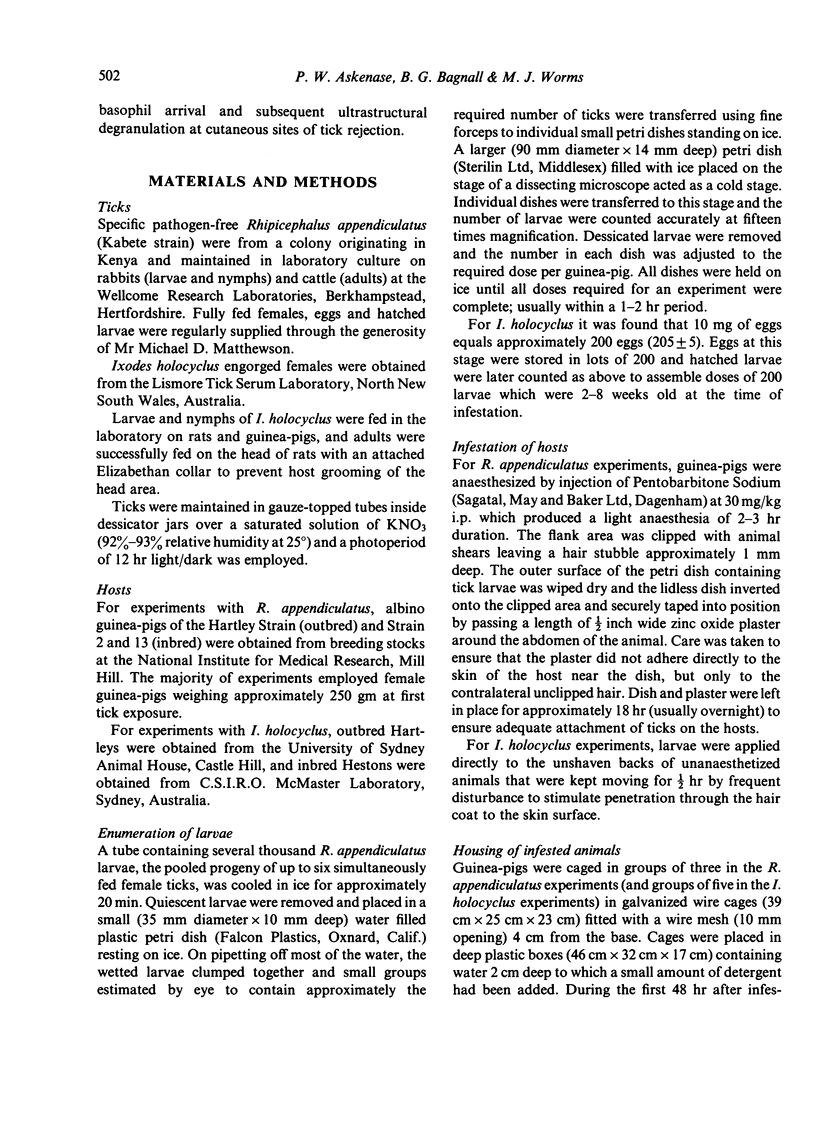
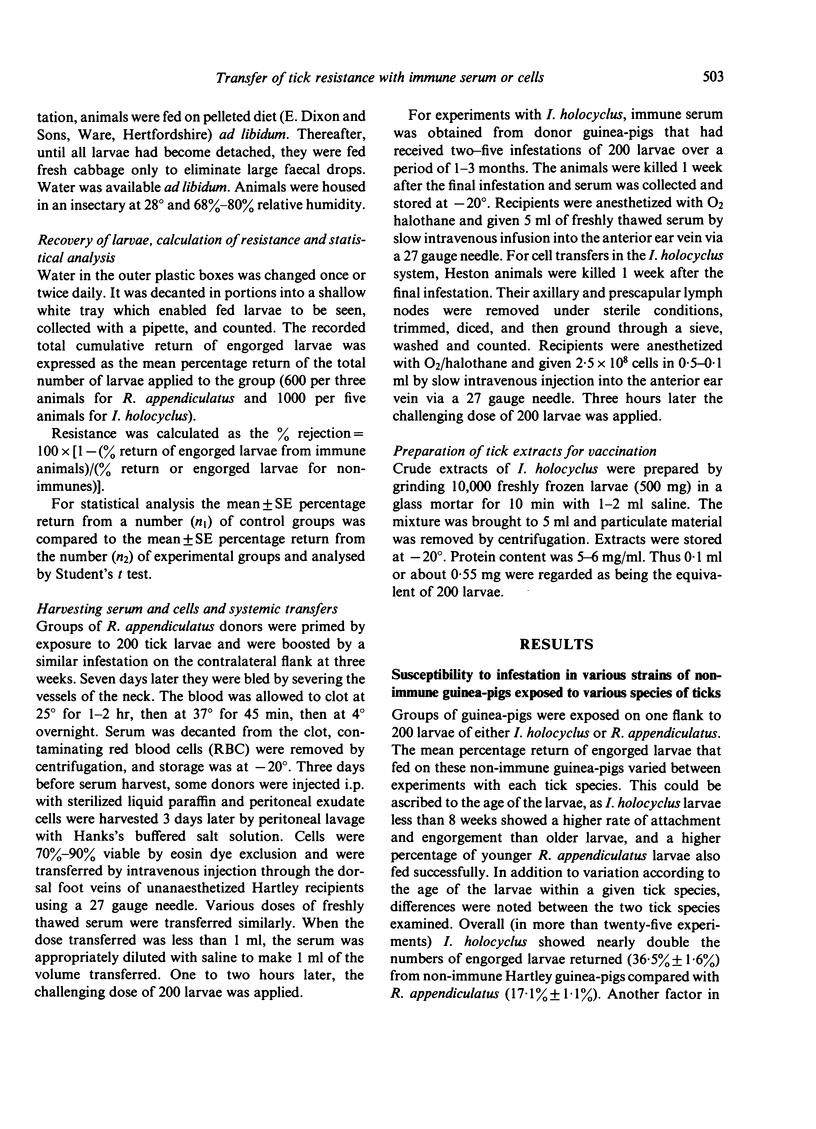

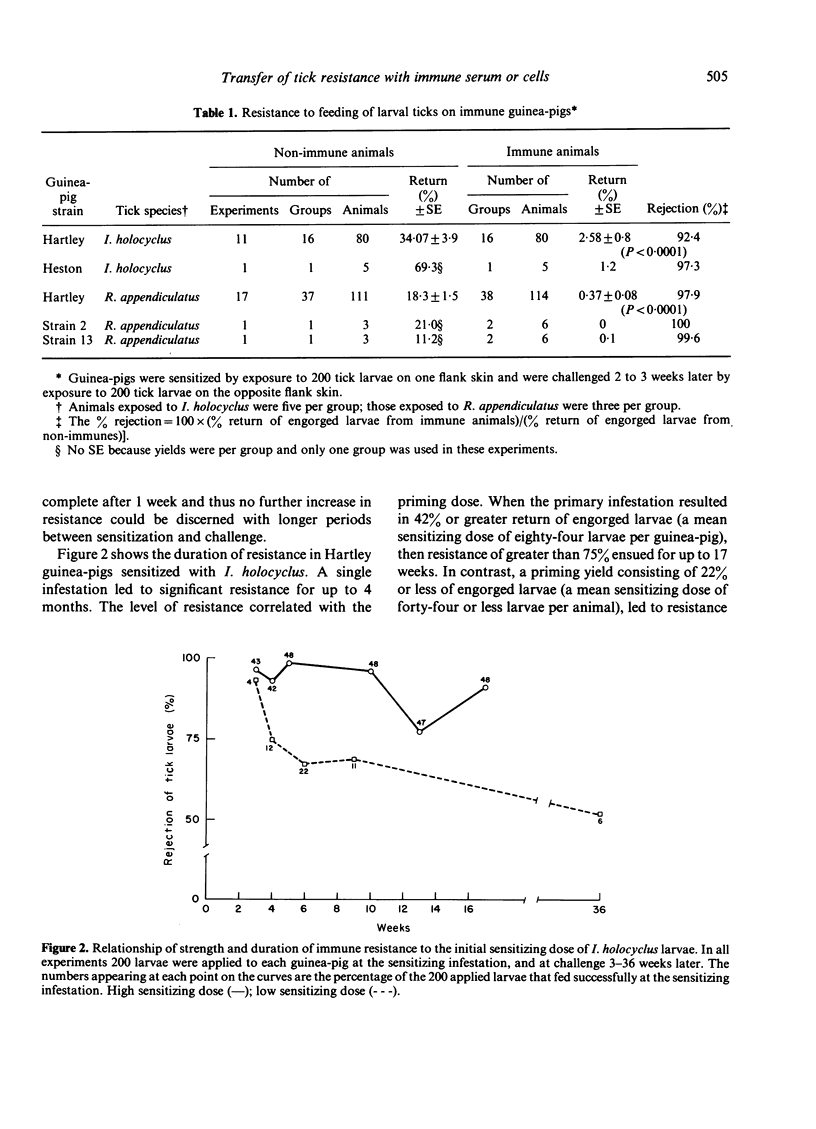
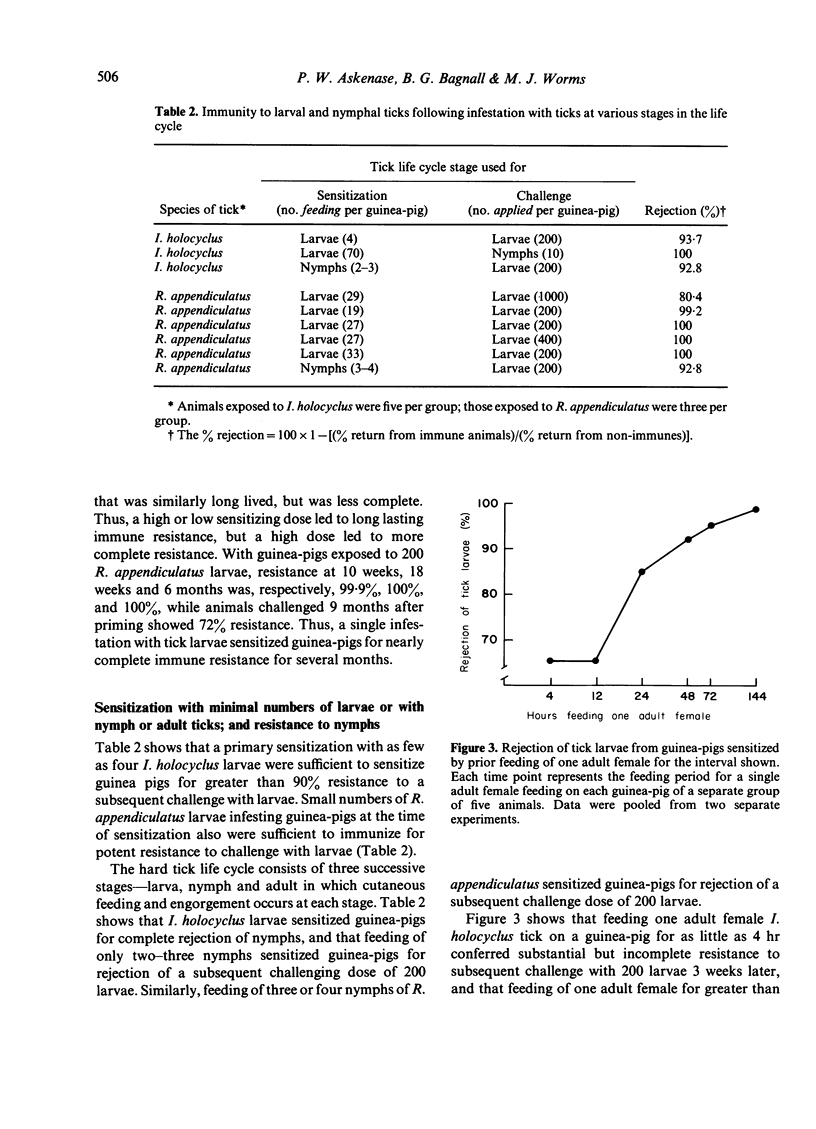
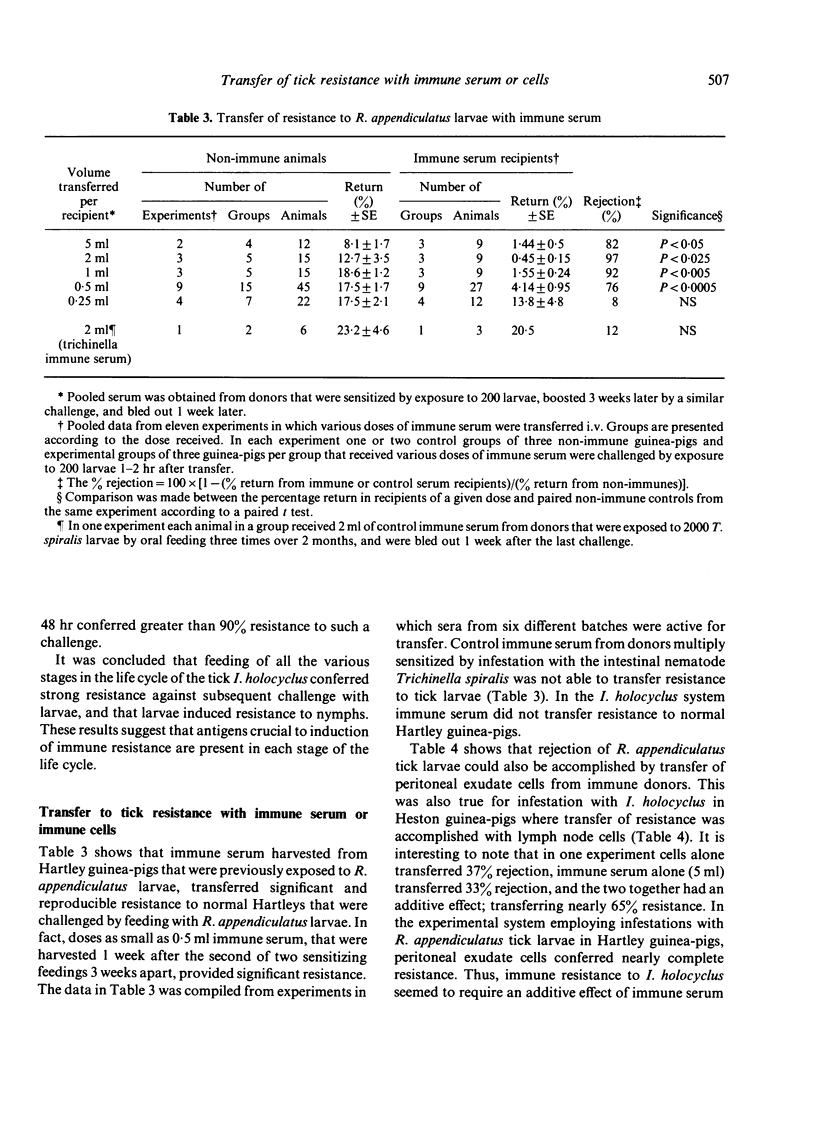

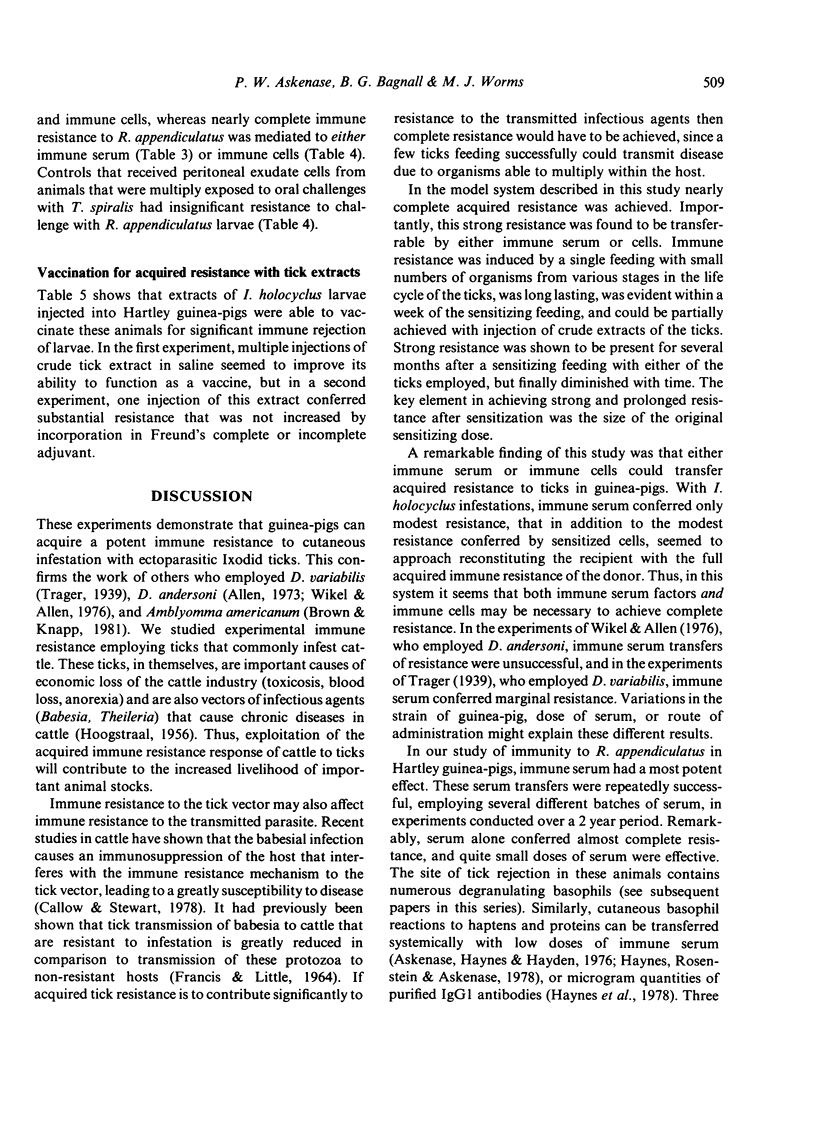
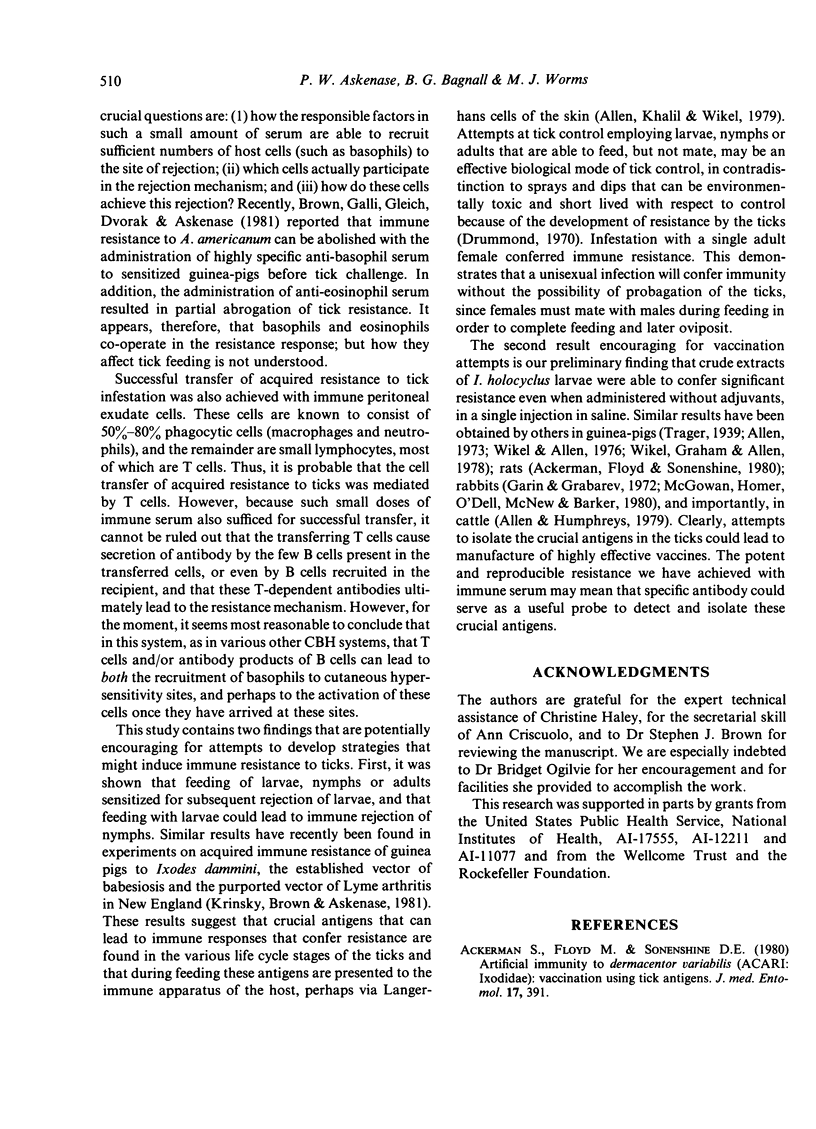
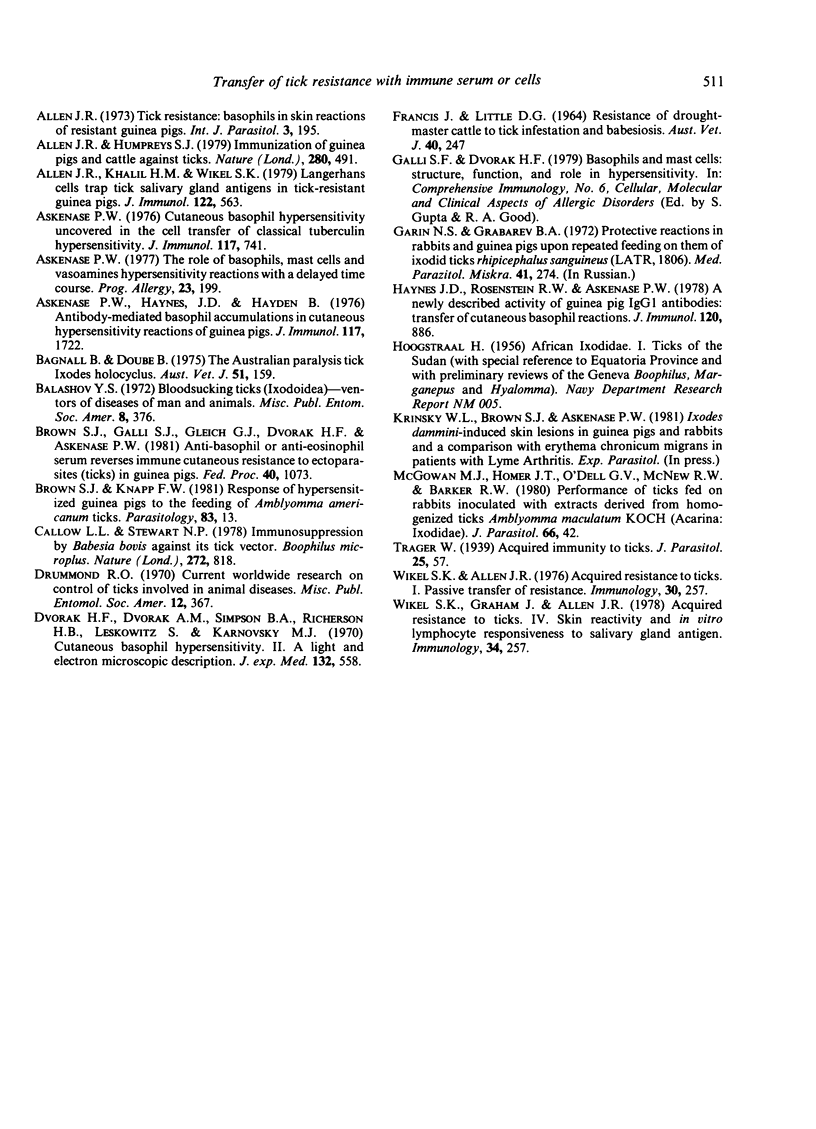
Selected References
These references are in PubMed. This may not be the complete list of references from this article.
- Ackerman S., Floyd M., Sonenshine D. E. Artificial immunity to dermacentor variabilis (Acari: Ixodidae): vaccination using tick antigens. J Med Entomol. 1980 Sep 30;17(5):391–397. doi: 10.1093/jmedent/17.5.391. [DOI] [PubMed] [Google Scholar]
- Allen J. R., Humphreys S. J. Immunisation of guinea pigs and cattle against ticks. Nature. 1979 Aug 9;280(5722):491–493. doi: 10.1038/280491a0. [DOI] [PubMed] [Google Scholar]
- Allen J. R., Khalil H. M., Wikel S. K. Langerhans cells trap tick salivary gland antigens in tick-resistant guinea pigs. J Immunol. 1979 Feb;122(2):563–565. [PubMed] [Google Scholar]
- Allen J. R. Tick resistance: basophils in skin reactions of resistant guinea pigs. Int J Parasitol. 1973 Mar;3(2):195–200. doi: 10.1016/0020-7519(73)90024-6. [DOI] [PubMed] [Google Scholar]
- Askenase P. W. Cutaneous basophil hypersensitivity uncovered in the cell transfer of classical tuberculin hypersensitivity. J Immunol. 1976 Sep;117(3):741–747. [PubMed] [Google Scholar]
- Askenase P. W. Role of basophils, mast cells, and vasoamines in hypersensitivity reactions with a delayed time course. Prog Allergy. 1977;23:199–320. [PubMed] [Google Scholar]
- Callow L. L., Stewart N. P. Immunosuppression by Babesia bovis against its tick vector, Boophilus microplus. Nature. 1978 Apr 27;272(5656):818–819. doi: 10.1038/272818a0. [DOI] [PubMed] [Google Scholar]
- Dvorak H. F., Dvorak A. M., Simpson B. A., Richerson H. B., Leskowitz S., Karnovsky M. J. Cutaneous basophil hypersensitivity. II. A light and electron microscopic description. J Exp Med. 1970 Sep 1;132(3):558–582. doi: 10.1084/jem.132.3.558. [DOI] [PMC free article] [PubMed] [Google Scholar]
- Garin N. S., Grabarev P. A. Zashchitnye reaktsii u krolikov i morskikh svinok pri povtornom kormlenii na nikh iksodovykh kleshchei Rhipicephalus sanguineus (Latr., 1806. Med Parazitol (Mosk) 1972 May-Jun;41(3):274–279. [PubMed] [Google Scholar]
- Haynes J. D., Rosenstein R. W., Askenase P. W. A newly described activity of guinea pig IgG1 antibodies: transfer of cutaneous basophil reactions. J Immunol. 1978 Mar;120(3):886–894. [PubMed] [Google Scholar]
- McGowan M. J., Homer J. T., O'Dell G. V., McNew R. W., Barker R. W. Performance of ticks fed on rabbits inoculated with extracts derived from homogenized ticks Amblyomma maculatum koch (Acarina: Ixodidae). J Parasitol. 1980 Feb;66(1):42–48. [PubMed] [Google Scholar]
- Wikel S. K., Graham J. E., Allen J. R. Acquired resistance to ticks. IV. Skin reactivity and in vitro lymphocyte responsiveness to salivary gland antigen. Immunology. 1978 Feb;34(2):257–263. [PMC free article] [PubMed] [Google Scholar]


